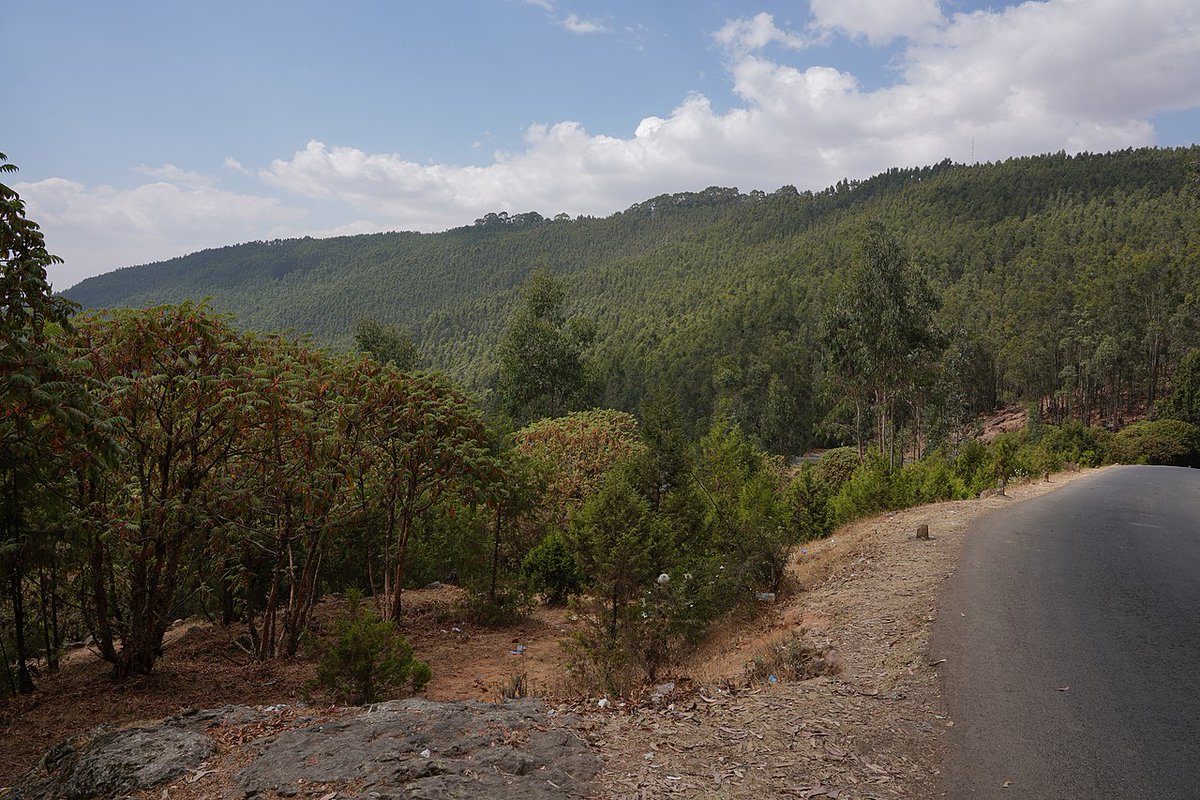
Do you know this about #AddisAbaba's #water supply history?
1⃣ #AddisAbaba is located near a major watershed divide at the upper most catchment of Awash river basin
2⃣A number of small catchment rivers starts from #Entoto ridges & depressions as springs (cold and thermal)
1/8

1⃣ #AddisAbaba is located near a major watershed divide at the upper most catchment of Awash river basin
2⃣A number of small catchment rivers starts from #Entoto ridges & depressions as springs (cold and thermal)
1/8


➡️#AddisAbaba was founded in 1870s, taking into consideration of these springs as its major #water supply to start the history...
➡️The first water supply source of the city was groundwater. Not a whole lot of documentation on water use amount on that I could find.
2/8
➡️The first water supply source of the city was groundwater. Not a whole lot of documentation on water use amount on that I could find.
2/8
Surface water sources:
➡️Geffersa-I/II Dam. Dam situated west of #AddisAbaba, along #AddisAbaba-#Ambo road.
➡️First constructed in 1938
➡️Rehabilitated in 1955/56, raising in height from 10m to 16m which then called as Geffersa-I/II dam post rehabilitation.
:-3/8
➡️Geffersa-I/II Dam. Dam situated west of #AddisAbaba, along #AddisAbaba-#Ambo road.
➡️First constructed in 1938
➡️Rehabilitated in 1955/56, raising in height from 10m to 16m which then called as Geffersa-I/II dam post rehabilitation.
:-3/8
#Legedadi Dam
➡️Commissioned in 1970 estimated at 42.17 MCM storage.
➡️treatment Plant capacity generously estimated at ~192,000 m3/d and still a major player.
:-4/8
➡️Commissioned in 1970 estimated at 42.17 MCM storage.
➡️treatment Plant capacity generously estimated at ~192,000 m3/d and still a major player.
:-4/8
Groundwater sources
➡️>230 major wells have been drilled for ground water supply in #AddisAbaba of which ~143 are currently operational.
➡️About 80% of 2000's wells (~300m deep) are out of service
➡️Current estimated daily water production from these sources is 290,000 m3/day
➡️>230 major wells have been drilled for ground water supply in #AddisAbaba of which ~143 are currently operational.
➡️About 80% of 2000's wells (~300m deep) are out of service
➡️Current estimated daily water production from these sources is 290,000 m3/day

How does the current estimated demand to supply gap look likes? Not good.
➡️Estimated total demand is 1.2 million m3/day. While supply is at 0.48 million m3/day. ONLY 40% coverage.
➡️How does the city deals with this? Water rationing plan 👇
weaspire.info/addis-ababas-c…
:-6/8
➡️Estimated total demand is 1.2 million m3/day. While supply is at 0.48 million m3/day. ONLY 40% coverage.
➡️How does the city deals with this? Water rationing plan 👇
weaspire.info/addis-ababas-c…
:-6/8

There is good news that a #Gerbi project is going forward. Will that be enough?
Not really.
Contribution of Gerbi 👇 compared to overall supply needs is ONLY about 10% to 12% of the 60% shortage #AddisAbaba needs ASAP.
:-7/8
Not really.
Contribution of Gerbi 👇 compared to overall supply needs is ONLY about 10% to 12% of the 60% shortage #AddisAbaba needs ASAP.
:-7/8

What can we do about it?
Well... tune in to our next @WeAspire webinar that we will be discussing this and some more addressing this urgent issue.
:-8/8
Well... tune in to our next @WeAspire webinar that we will be discussing this and some more addressing this urgent issue.
:-8/8
• • •
Missing some Tweet in this thread? You can try to
force a refresh




